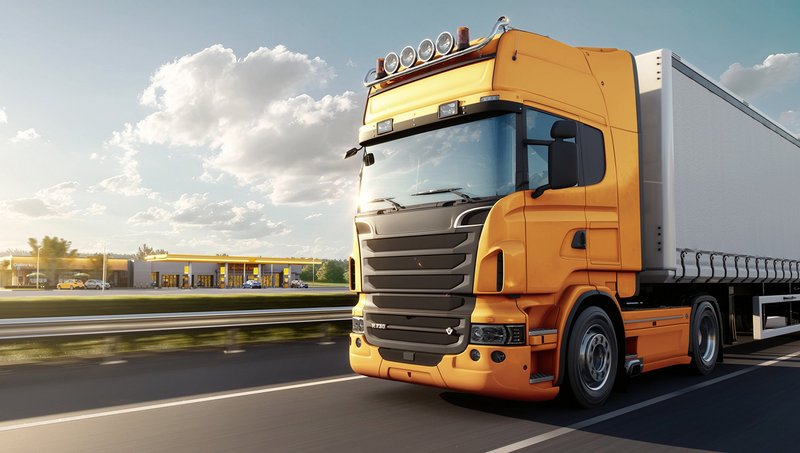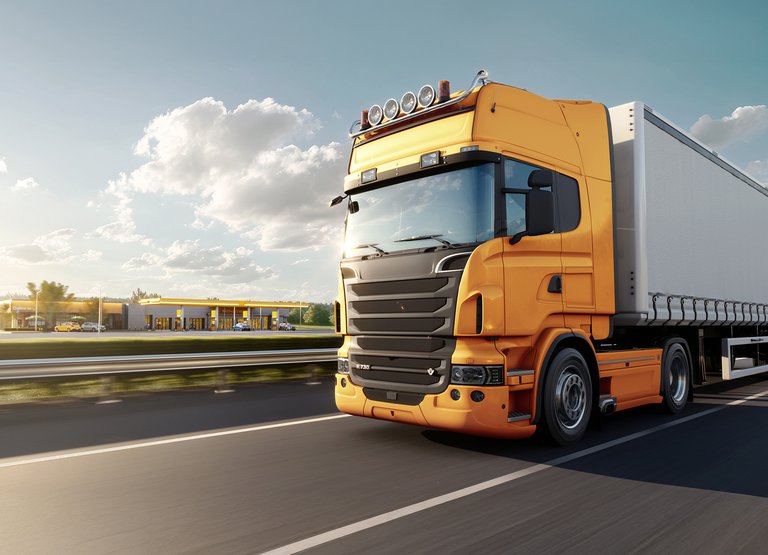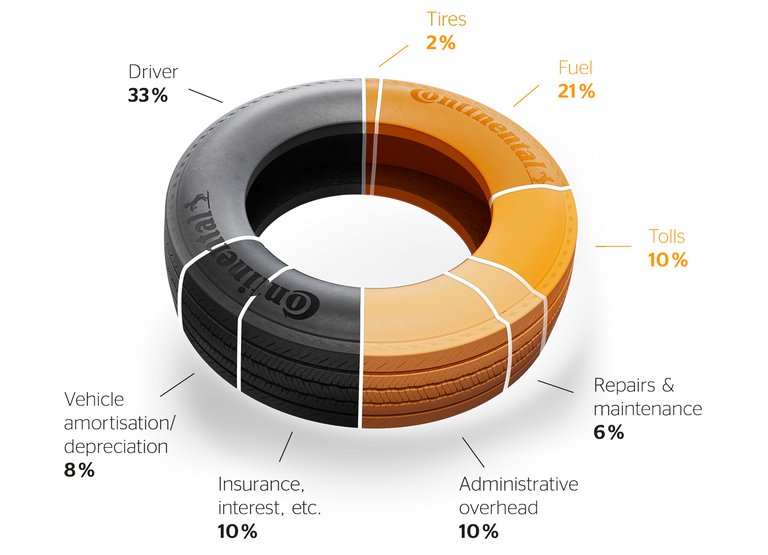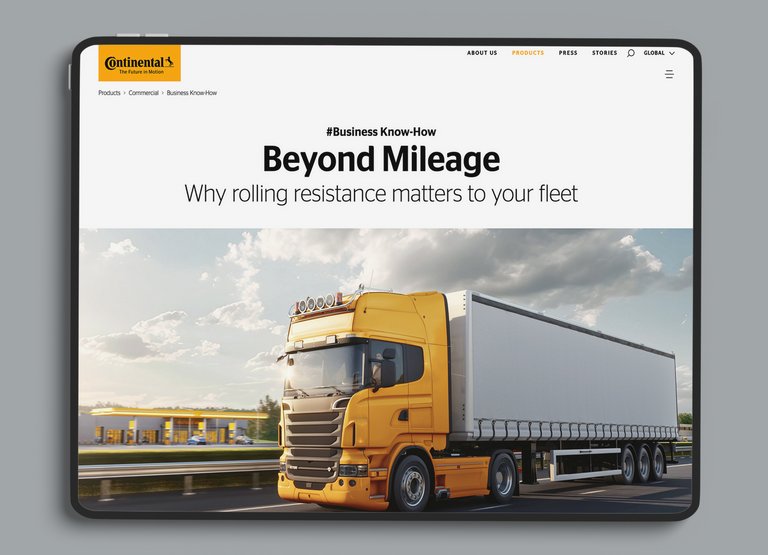Continental launches campaign for fleet customers: Rolling resistance becomes increasingly important
- New website explains the advantages of rolling resistance-optimized tires for commercial vehicles
- Specific calculations prove that fleets operators can significantly reduce their operating costs application
- Optimized rolling resistance helps save fuel, increase fleet efficiency, and improve sustainability
Hanover, Germany, July 3, 2025. Continental has launched an information campaign for commercial vehicle fleets to raise awareness of the increasing importance of rolling resistance in commercial vehicle tires. The initiative centers on a website with comprehensive information about rolling resistance-optimized tires and their contribution to efficient, sustainable fleet operations. “Our aim is to show that our broad tire portfolio covers every application area for our customers,” says Kristina Kumme, Strategic Program Manager at Continental. Depending on the vehicle's application profile, either a rolling resistance-optimized or a mileage-optimized tire may be more economical. “Many of our fleet customers choose mileage-optimized tires out of habit, as they expect a longer service life thanks to the robust tread depth.” However, it often remains unclear why commercial vehicle manufacturers are increasingly equipping vehicles with rolling resistance-optimized tires. There is often a lack of insight into the advantages and specific properties of rolling resistance-optimized tires in certain applications – especially since mileage optimization has been the focus of development and application in the past.
The right tire choice influences operating costs
The centerpiece of the information campaign is the website. There, Continental provides animated infographics, short videos, and relevant facts and figures on the topic of rolling resistance-optimized tires. Figures like these surprise even industry experts: Tires account for only around two percent of the direct operating costs of a commercial vehicle fleet. However, through their influence on fuel consumption, CO₂ emissions, and the calculation of toll charges, they can affect up to 31 percent of total operating costs*. Internal calculations by Continental's tire developers show the magnitude of savings that fleets can achieve in terms of total cost of ownership (TCO) – provided that tires are selected strategically and in line with requirements. The fifth-generation tire lines are compared: Conti EfficientPro, Conti Eco, and Conti Hybrid – each in different application scenarios.
Rolling resistance is becoming increasingly important
For a long time, fleet operators have focused primarily on mileage when choosing tires to reduce costs. “This continues to be justified for certain fleet requirements,” explains Kristina Kumme. However, in view of stricter EU emission guidelines and the transformation of the logistics industry towards climate-friendly transport, rolling resistance is becoming increasingly relevant. Whether tires optimized for rolling resistance or mileage make more sense for a fleet depends heavily on the application profile of the vehicles and the individual requirements. "This is exactly where we come in. We show our fleet customers that we offer a diverse tire portfolio with specific properties for different applications,” says Kumme. “We provide concrete calculation examples and targeted information about the advantages of optimized rolling resistance." Low rolling resistance contributes measurably to reducing fuel consumption – and thus to reducing operating costs and CO₂ emissions.
Strategic tire selection depending on the application
The specially designed website offers a high level of practical value with comparative calculations between the Conti Eco, Conti Hybrid, and Conti EfficientPro tire lines. It clearly shows how vehicle use in regional or long-distance transport affects tire performance and operating costs. All values are based on a 4x2 semi-trailer truck with a total weight of over 16 tons, an annual mileage of 120,000 kilometers, and a diesel price of 1.55 euros per liter. “We determined the cost savings using the VECTO calculation tool and our LODC calculator,” explains Kristina Kumme. With the Lowest Overall Driving Costs (LODC) concept, fleet operators with a fleet of 150 vehicles can save over euros 300,000 in operating costs per year by choosing the right tires. “In addition, there is a reduction in CO₂ emissions thanks to fuel savings of up to 2,105 liters per vehicle per year,” adds Kristina Kumme.
Benefits of digital tire solutions
Continental's holistic approach, which combines sustainability and cost-effectiveness, also includes digital tire management solutions such as ContiConnect and retreaded truck tires from the ContiLifeCycle. The company supplements its premium tires with comprehensive services aimed at minimizing downtime, reducing costs, and conserving resources. The overall package also impresses customers such as Gerhard Pomberg, Logistics Manager at German waste management company Remondis: "A digitalized fleet can be maintained proactively. This contributes effectively to CO₂ savings and resource conservation. We benefit from higher fleet efficiency, lower fuel consumption, and longer tire mileage," explains Kristina Kumme.
Climate protection, fuel consumption, and rolling resistance are directly related. Rolling resistance is a key lever for saving fuel, reducing operating costs, and reducing emissions. With its information initiative, Continental is specifically targeting fleet operators in the transport and logistics industry who want to reconcile economic efficiency and environmental goals. “Tires with optimized rolling resistance are particularly beneficial for our fleet customers because they significantly reduce fuel consumption and improve overall profitability,” concludes Kristina Kumme. “They also contribute to reducing CO₂ emissions and help transport and logistics companies comply with the European Union's strict environmental regulations and actively shape the transformation to low-emission logistics.”

Annette Rojas
Business Area Replacement Tires EMEA
Spokesperson Commercial Vehicle Tires
Continental Tires




